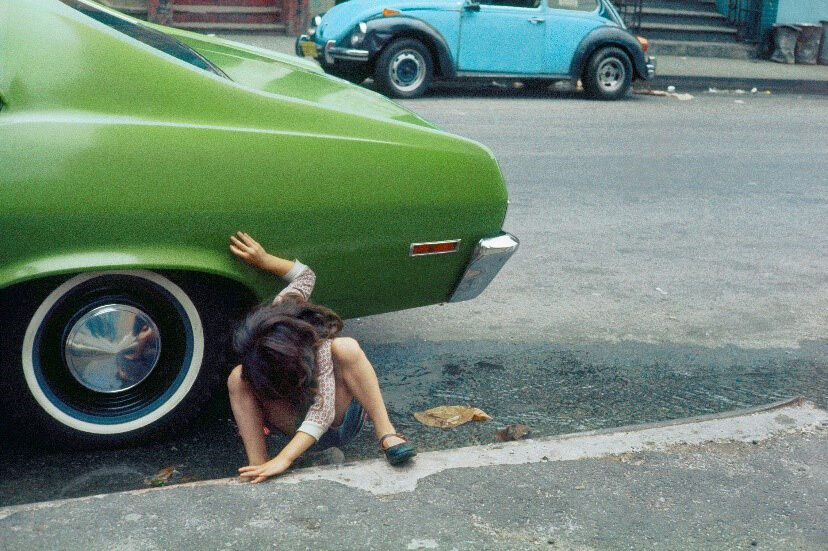
N.Y, 1980
Helen Lewitt
1913 - 2009
Dye transfer print. 23.5 x 36.1 cm. Ed 1.
Helen Levit
Om fotografen
Helen Levitt was an American photographer. She was particularly noted for "street photography" around New York City, and has been called "the most celebrated and least known photographer of her time."
Levitt grew up in Bensonhurst, Brooklyn, NY. She dropped out of high school and started working for J. Florian Mitchell, a commercial portrait photographer in the Bronx, in 1931. There, she learned how to develop photos in the darkroom. She wanted to do something in the arts, but she “could not draw well.” She saw the work of Henri Cartier-Bresson, a large influencer on her career, and for the first time saw photography as art. She learned composition by looking at paintings in museums, while also familiarizing herself with the works of the members of the Film and Photo League. She practiced by photographing her mother’s friends with a used Voigtländer camera.
While teaching art classes to children in 1937, Levitt became intrigued with the transitory chalk drawings that were part of the New York children's street culture of the time. She purchased a Leica camera, and began to photograph these works, as well as the children who made them. The resulting photographs were ultimately published in 1987 as In The Street: chalk drawings and messages, New York City 1938–1948.
After In the Street, she started taking more street photography in Spanish Harlem and the Lower East side. During the 1940's, the lack of air conditioning meant people were outside more, which invested her in street photography. Her work was first published in the Fortune magazine's July 1939 issue.
Levitt received her first grant in 1946 from the Museum of Modern Art. In 1959 and 1960, she received two grants from Guggenheim Foundation for her pioneering work in color photography. In 1965 she published her first major collection, A Way of Seeing. Much of her work in color from the 1960s was stolen in a 1970 burglary of her East 13th Street apartment. The remaining photos, and others taken in the following years, can be seen in the 2005 book Slide Show: The Color Photographs of Helen Levitt. However, she felt more comfortable working with black and white, as she gave up color photography in the 1990s. In 1976, she was a Photography Fellow of the National Endowment for the Arts.
Levitt also had a known connection with Walker Evans. In 1937, she showed him her photographs of children playing. He found interest in them, and so from 1938-1939 they worked together, roaming the streets and taking photos.
Helen Lewitt